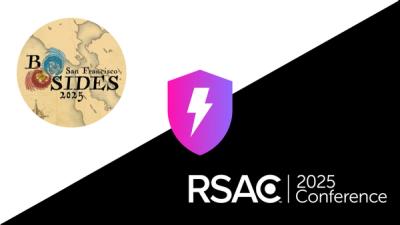
Security News
NVD Concedes Inability to Keep Pace with Surging CVE Disclosures in 2025
Security experts warn that recent classification changes obscure the true scope of the NVD backlog as CVE volume hits all-time highs.
Automatic grading for DLAI courses. Designed to be compatible with Coursera's grading requirements.
To use this library you will need to have Python, Docker and coursera-autograder installed in your pc.
You can use pip to install it!
pip install dlai_grader
To start building your grader cd into the directory where you will be working and use the following command:
dlai_grader --init
This will ask you for:
This will generate a file system tree like this:
.
└── grader (directory you invoked the command from)
├── data/ -> To store datasets (csv, TF Datasets, etc).
├── learner/ -> The learner facing version will be generated here.
├── solution/ -> Place solution.ipynb here
├── submission/ -> Necessary only in debug mode (no need to place anything here).
├── mount/ -> This mocks the bind mount that coursera will attach to the container. Should contain submission.ipynb or other file required for grading.
├── .conf -> Configuration variables.
├── Dockerfile -> Uses frolvlad/alpine-miniconda3:python3.7 as base image.
├── Makefile -> Useful commands.
├── requirements.txt -> Python dependencies.
├── entry.py -> Entrypoint of the grader.
└── grader.py -> Grading logic.
Now that you have the layout of the grader you will need to place the solution of the assignment within the solution/ directory. This file must be named solution.ipynb.
A good starting point is to use the solution to create the first iteration of the grader. To do this place the solution within the mount/ directory and rename it to submission.ipynb. You can use the make submit-solution command to do this.
Your filesystem tree should look like this:
.
└── grader
├── ...
├── solution/
│ └── solution.ipynb
├── mount/
│ └── submission.ipynb
└── ...
Note that the grader can be used to grade files other than Jupyter notebooks. If this is the case you can leave the solution/ directory empty and place the file to grade within mount/. This file can be anything (.h5, .tar.gz, .zip, etc) the only requirement is that it should match the name of the file to submit in the coursera programming item.
We have seen many learners facing issues when submitting their assignments because coursera does not show them the latest version. To address this, a good alternative it to always check that the submission of the learner is up to date and if not, tell them how they can upgrade to the latest version.
To ensure that a submission is compatible with a particular version of the grader the versioning feature has been created.
Within the .conf file you will find the current version of the grader under the variable GRADER_VERSION.
To compare against this version the submission notebook must include a variable called grader_version in its metadata. To add this variable to the submission.ipynb file you can use the make versioning command (this is just a wrapper of the dlai_grader --versioning command). This will add the variable matching the same version as the one found in the .conf file.
After a refactor with breaking changes to the grader it is a good idea to upgrade the version to a newer one. You can do this be using the make upgrade command. This will add 1 to the current version in the .conf file and in the notebook.
You might decide to filter out cells created by learners (or other ones such as the ones that train models). If you take this approach you can add a tag to each cell's metadata and then filter out the ones that don't have this tag .
If you wish to add the graded tag to each cell in the submission.ipynb notebook you can use the make tag command.
Note that the make tag, make upgrade and make versioning commands change only the mount/submission.ipynb file.
The next step is to include all the necessary Python dependencies. For this add them to the requirements.txt file. By default only dlai_grader is included.
Notice that two blank Python files were created during the init step. These are grader.py and entry.py. It might be odd to have two separate files if ony could do the trick.
However it is usually best to separate the grading logic from the entrypoint of the application, as the names suggest, these should be placed within grader.py and entry.py, respectively.
Every time you make changes to any file that the grader is dependant-on, you should rebuild the Docker image used for grading. You can do this by using the make build command.
To grade, simply use the make grade command. This will spin up the coursera-autograder tool to simulate Coursera's grading environment.
Some times when using this command you will be presented with a not so descriptive error by coursera-autograder such as "Problem when running command. Sorry!". This happens because this tool does not transparently exposes the errors.
When you face this error you can enter debug mode by using the make debug command. This will spin up a container using the image you created and configuring it in the same way as coursera-autograder would.
Within the container you have a command line where you can test your code directly. To do this, export the partid you are currently working on as an environment variable. export partId=XxXx will do the trick. And then use the entrypoint of the application by running python entry.py.
By doing this you can actually see the error messages that are being generated and another nice feature of this mode is that you don't need to rebuild the image, you can simply edit grading.py and run python entry.py to try out the grader.
To better ilustrate how to use the library, an example will be used. The assignment for the first week of the first course of the Tensorflow 1 specialization will be used.
Trimming the markdown and including the solution, the assignment looks like this:
import tensorflow as tf
import numpy as np
# GRADED FUNCTION: house_model
def house_model():
### START CODE HERE
# Define input and output tensors with the values for houses with 1 up to 6 bedrooms
# Hint: Remember to explictly set the dtype as float
xs = np.array([1.0, 2.0, 3.0, 4.0, 5.0, 6.0], dtype=float)
ys = np.array([1.0, 1.5, 2.0, 2.5, 3.0, 3.5], dtype=float)
# Define your model (should be a model with 1 dense layer and 1 unit)
model = tf.keras.Sequential([tf.keras.layers.Dense(units=1, input_shape=[1])])
# Compile your model
# Set the optimizer to Stochastic Gradient Descent
# and use Mean Squared Error as the loss function
model.compile(optimizer='sgd', loss='mean_squared_error') # @REPLACE model.compile(optimizer=None, loss=None)
# Train your model for 1000 epochs by feeding the i/o tensors
model.fit(xs, ys, epochs=1000) # @REPLACE model.fit(None, None, epochs=None)
### END CODE HERE
return model
# Get your trained model
model = house_model()
new_y = 7.0
prediction = model.predict([new_y])[0]
print(prediction)
FAQs
Grading utilities for DLAI courses
We found that dlai-grader demonstrated a healthy version release cadence and project activity because the last version was released less than a year ago. It has 4 open source maintainers collaborating on the project.
Did you know?

Socket for GitHub automatically highlights issues in each pull request and monitors the health of all your open source dependencies. Discover the contents of your packages and block harmful activity before you install or update your dependencies.

Security News
Security experts warn that recent classification changes obscure the true scope of the NVD backlog as CVE volume hits all-time highs.

Security Fundamentals
Attackers use obfuscation to hide malware in open source packages. Learn how to spot these techniques across npm, PyPI, Maven, and more.

Security News
Join Socket for exclusive networking events, rooftop gatherings, and one-on-one meetings during BSidesSF and RSA 2025 in San Francisco.